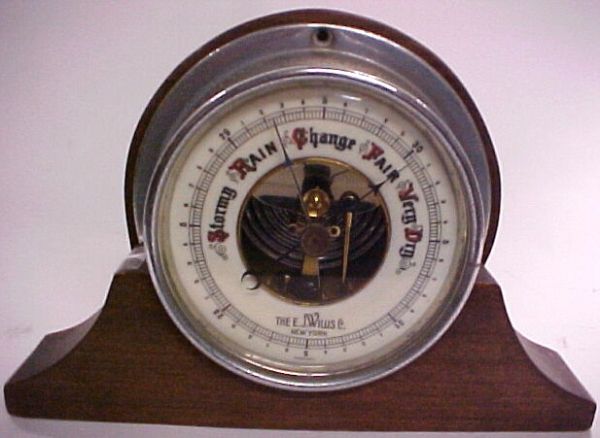Here are summaries of some earlier instrument discussions:
Dry bulb vs. Ther Attached
asterix135 wrote:Why is it that these two readings never seem to line up?
Kevin wrote:The barometer is kept inside the ship (or in some cases an observatory shack) while the dry bulb is outside in the free air or even away from the ship in a special screen - that is if the ship is over-wintering in the ice. The attached thermometer is used to adjust mercury barometer readings to a standard temperature since the column is sensitive to both temp and pressure.
Barometer Attached Thermometer
tuxfordc wrote:My question is about the need to record/transcribe the attached thermometer. This is normally used in correcting a baro reading for the ambient temperature. The reported barometer would include an adjustment, usually read from a chart supplied for the particular barometer. Why is this reading required?
tuxfordc wrote:Just looking at the logs, with baro attached temperature recorded after the pressure
I wonder if they really did it properly. The temp is supposed to be read first so that body heat does not
affect the reading. The much larger mass of mercury in the barometer is much slower to change
so is read second, then the correction calculated, and the corrected pressure recorded in the log.
Philip wrote:I wish that the ship observers were as conscientious and skilled as you were. The ship records are not up to the standards of modern station observations (1950s counts as modern, though only just).
In general, we don't know if the observations we're collecting were adjusted, but usually they aren't. I suspect that this is because doing adjustments correctly on a moving ship is not easy, and the people keeping these logs are not meteorological professionals, so it's safer to collect the raw measurement and get someone at HQ (me in this case) to do the corrections at leisure. Occasionally we see this happening in a log - someone will have edited a log sometime after the measurements were made, crossing out the original measurements and writing in adjusted versions (usually in red ink).
Kevin wrote:The 19th c. US Navy (and by extension the Revenue Cutter Service) logbook instructions I've looked at suggest that only raw data were to be recorded (barometer & attached thermometers). Methods no doubt evolved with time, however.
Philip wrote:OK, mea culpa, I may get regularly frustrated by some of their more creative approaches to weather observations, but our log-keepers were actually amazingly conscientious - we always get the obs, regardless of how oppressed they are with storm, scurvy, shell, or influenza.
As reparation I attach [attachment lost] a particularly noteworthy example of dedication to duty, that I encountered in the, increasingly distant, pre-oldWeather days. This is from the log of HMS Warspite during the battle of Crete. It's clear they are having a very stressful afternoon, but they don't let it distract them from recording the weather. I'm particularly pleased that they put out the fire in the starboard 6-inch battery before starting the afternoon's observations program. An air temperature measurement from a ship that was currently on fire would obviously be suspect.
